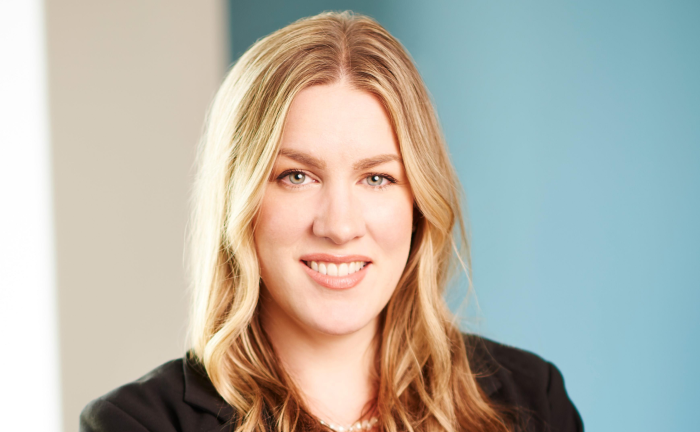I’m a 43-year-old woman with a partner (not legally married) and no kids. I currently have $500,000 in a 401(k) and contribute up to the pre-tax limit every year, plus $10,000 in non-deductible contributions. I have $50,000 in an IRA and bonds, $100,000 in stocks and $100,000 in savings. I own a rental property that currently has $550,000 in equity and makes $15,000 profit annually, which will be paid off before I turn 55. The house I live in is owned with a mortgage and has $200,000 in equity. I receive a VA disability pension of $2,000 per month tax-free.
When I turn 60, I will also receive a retirement pension of $2,000 per month. Both of those have COLA adjustments annually. I plan on purchasing a second rental property soon. I expect my expenses in retirement to be around $100,000 per year. With my VA disability, I also have free healthcare coverage. I’d like to know if I will be able to retire at 55 without needing a part-time job.
– Stephanie
First, congratulations on diversifying your assets and income streams. It’s clear that you consistently made purposeful choices with your money. By maintaining a long-term financial mindset, you now have some personal wealth to show for it. Determining whether you can potentially afford to retire at 55 requires what’s known as a gap analysis.
A financial advisor can help you build a comprehensive retirement plan. Connect with a fiduciary advisor today.
Many Americans will not have the same breadth of retirement income available to them as you do when they retire and will have to rely more heavily on savings withdrawals to cover their expenses. While the results may be different, gap analysis will help these individuals plan for retirement, as well.
Gap Analysis

Have you ever asked an online search engine how much money you need to retire, only to find staggering lump sums in the search results? These numbers aren’t helpful because they don’t frame retirement in terms of income needed over a long period. Gap analysis in retirement income planning is a more useful approach because it answers the question: What are my expenses and income, and is there an income shortfall or “gap” that I need to cover with savings?
Here’s the basic equation: Expenses – Reliable Income Sources = Gap
Of course, many variables come into play in real life such as inflation and taxes, and the actual calculations are more complex. Furthermore, if we were building a financial plan for you, we’d ask follow-up questions about the information you provided, gather documents to verify the fine print of your benefits and learn about your specific objectives. My firm would deliver a multiple-scenario plan to you that can show you yearly projections of your expenses, your income, and your assets. (And if you want to work with a financial advisor, this tool can help you connect with fiduciaries who serve your area.)
Setting Up the Calculations
Taking the information you provided at face value, without gaining the clarity we’d like on some of the details, we can illustrate a basic scenario. We’ll still need to make some assumptions as well as make sure we’re being mindful of taxes.
Here are the assumptions we’ll be making:
Life Expectancy: IRS life expectancy for you is 86. We will plan for several years past life expectancy.
Inflation Rate: We’ll assume 3% annually. For simplicity, we’ll apply this assumption to your living expenses, pension cost-of-living adjustments (COLAs) and to your profits from the rental property.
Social Security Benefit: You can visit ssa.gov for an accurate projection of your future benefit, but we assume that at age 67, you will collect $46,931. We will assume a conservative COLA of only 1% annually. While there is mounting concern over the future of Social Security, this scenario assumes you will receive it as the benefit exists today.
Investment Returns: We’ll assume 6% annually from now through the end of your retirement.
Real Estate: We’re assuming you’ll be living in your current residence and maintaining your rental indefinitely. Without information about the second rental, we will disregard it from our calculations.
Expenses: You mention that you expect your expenses will be around $100,000 per year in retirement. If you weren’t sure of that, you’d aim to replace 70-90% of your pre-retirement income. Assuming $100,000 is an accurate age 55 number, that cost would gradually inflate to $262,765 by age 86.
Savings: Let’s assume you continue to save $33,000 per year until age 50 and $40,500 per year once you are eligible for catch-up contributions. Since you stated that you’re saving $10,000 per year above the 401(k) limit, we are also assuming that the additional savings are in after-tax, non-Roth dollars.
We’ll also want to keep in mind that you’ll owe taxes on your private pension, part of your Social Security benefit, and on amounts pulled from your pre-tax retirement accounts. Once you reach age 75, you’ll need to begin taking required minimum distributions (RMDs) from pre-tax accounts (the RMD age changes from 73 to 75 in 2033). RMDs are likely to increase your tax bill because you will likely be required to withdraw more than is necessary to cover your expenses. (And if you need help managing your RMDs and taxes in retirement, consider speaking with a financial advisor.)
Retirement Projections

When we input all the information, a year-by-year illustration will project your expenses, taxes, income, the gap that will be pulled from savings, and the value of your portfolio. Here are some projections at various points in your retirement. Please remember that we’ve had to make a lot of assumptions, and I can’t properly advise you without gathering more information. (And if you’re interested in getting a retirement gap analysis done, consider working with a financial advisor.)
Age 55: First Year of Retirement
Living expenses: $100,000
Estimated Taxes: $3,966
Retirement Income: $55,605
Withdrawals to Cover Gap: -$48,361
Projected Savings at Year End: $2,153,875
Age 67: Social Security Starts
Living Expenses: $142,576
Estimated Taxes: $21,981
Retirement Income: $168,386
Withdrawals to Cover Gap: $0
Projected Savings at Year End: $3,480,824
Age 75: RMDs Begin
Living expenses: $180,611
Estimated Taxes: $98,644
Retirement Income: $202,347
Withdrawals to Cover Gap: -$76,908
Projected Savings at Year End: $5,461,461
Age 95: You Outlive Your IRS Life Expectancy
Living expenses: $326,204
Estimated Taxes: $367,258
Retirement Income: $327,653
Withdrawals to Cover Gap: -$365,809
Projected Savings at Year End: $10,497,794
Bottom Line
Based on the figures you provided and the assumptions we made, your retirement readiness at age 55 seems probable thanks in large part to your income sources. Your estate could even grow to over $10 million if you end up living into your mid-90s and your investments average a 6% annual return. However, you’ll want to review your income streams with a professional to make sure they will be received as expected, with the actual COLA methodology factored into calculations.
Tips for Finding a Financial Advisor
Finding a financial advisor doesn’t have to be hard. SmartAsset’s free tool matches you with up to three vetted financial advisors who serve your area, and you can have a free introductory call with your advisor matches to decide which one you feel is right for you. If you’re ready to find an advisor who can help you achieve your financial goals, get started now.
Researching financial advisors and ultimately hiring one can feel like a daunting undertaking. But with the right knowledge and understanding of financial advisors, the process doesn’t have to feel overwhelming. That’s why we put together a comprehensive, soup-to-nuts guide on how to find and choose a financial advisor.
Loraine Montanye, CFP®, AIF® is a SmartAsset financial planning columnist and answers reader questions on personal finance topics. Got a question you’d like answered? Email AskAnAdvisor@smartasset.com and your question may be answered in a future column. Questions may be edited for length or clarity.
Loraine is a senior retirement plan advisor at DBR & CO. She has been compensated for this article. Additional resources from the author can be found at dbroot.com.
Photo credit: ©iStock.com/JohnnyGreig, ©iStock.com/MachineHeadz
The post Ask an Advisor: Can I Retire at 55? I Have $760k, Plus a Rental Property, Pension and Disability Benefits appeared first on SmartReads by SmartAsset.
Credit: Source link




